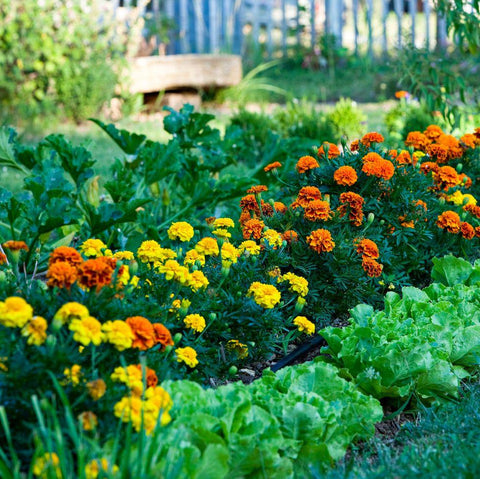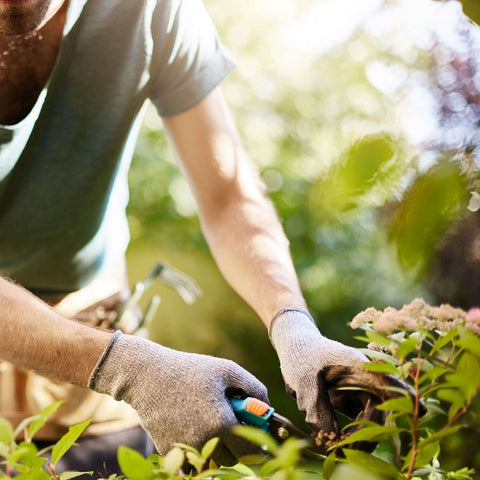Pruning is more than just trimming branches; it's an artful practice that involves shaping, nurturing, and enhancing the health and aesthetics of your plants. A well-pruned garden showcases the intricate balance between nature and human intervention, resulting in lush, vibrant growth that's both viually appealing and robust. In this comprehensive guide, we'll delve into the art of pruning, exploring the techniques, considerations, and benefits of this essential gardening practice. Whether you're tending to trees, shrubs, or flowering plants, mastering the art of pruning can transform your garden into a thriving masterpiece. The following content also has some reference value for raised garden beds.
Understanding the Purpose of Pruning
Promoting Healthy Growth
- Removal of Dead or Diseased Material
Pruning eliminates dead, diseased, or damaged branches that can harbor pests and diseases, preventing their spread.
- Enhancing Air Circulation
By thinning out dense growth, pruning improves air circulation within the plant, reducing the risk of fungal infections.

Aesthetics and Shape
- Shaping and Controlling Growth
Pruning allows you to guide the growth of your plants, creating visually appealing forms that complement your garden design.
- Encouraging Flowering and Fruiting
Proper pruning can stimulate the production of flowers and fruits by redirecting the plant's energy to reproductive growth.
When to Prune
- Spring Pruning
Many deciduous plants are pruned in late winter or early spring before new growth begins.
- Summer Pruning
Prune spring-flowering plants right after they bloom, and tackle summer-flowering plants in late winter or early spring.
- Fall Pruning
Some plants are best pruned in the fall, while they're dormant, to prevent disease spread and promote healthy growth in the next season.
Essential Pruning Tools
- Hand Pruners
Ideal for small branches and delicate stems, hand pruners come in various sizes and styles to suit different plants.
- Loppers
Loppers are used for thicker branches that hand pruners can't handle. They provide extra leverage for cutting through woody growth.
- Pruning Saws
For larger branches, pruning saws come in handy. They're designed to make clean cuts without damaging the surrounding tissue.
- Hedge Shears
Used for shaping hedges and shrubs, hedge shears have long, straight blades that create uniform cuts.

Pruning Techniques - Three Main Pruning Cuts
- Heading Cut
This involves cutting a branch back to a bud, which encourages new growth to develop from that bud.
- Thinning Cut
Thinning cuts involve removing an entire branch or stem, improving air circulation and light penetration.
- Removing Suckers and Watersprouts
Suckers grow from the base of the plant, while watersprouts shoot vertically from branches. Both should be removed to direct energy towards productive growth.
Pruning Different Types of Plants
Deciduous Trees
- Established Trees
Prune for structural integrity, removing dead or crossing branches, and thinning out overcrowded growth.
- Young Trees
Focus on shaping the young tree's structure, removing competing leaders, and training it for a strong framework.
Evergreen Shrubs
- Shaping and Thinning
Prune to maintain a desirable shape by thinning out dense growth and rejuvenating older shrubs.
- Flowering Shrubs
Prune right after flowering to encourage new growth for next year's blooms, removing old wood and dead flowers.
Fruit Trees
- Open Center Pruning
Common for fruit trees like peaches and plums, this approach opens up the center for light penetration and air circulation.
- Central Leader Pruning
Applicable to apple and pear trees, this technique maintains a central leader with lateral branches radiating from it.
Climbing Plants
- Removing Dead or Weak Growth
Prune dead or weak stems to encourage healthy, robust growth and prevent overcrowding.
- Training and Shaping
Guide the growth of climbing plants by pruning selectively to encourage them to grow in the desired direction.

Conclusion
The art of pruning goes beyond simply cutting branches; it's about understanding the unique needs of each plant and applying techniques that enhance its growth and appearance. By nurturing your plants through strategic pruning, you're sculpting a garden that not only showcases the beauty of nature but also reflects your care and expertise as a gardener. From shaping trees to rejuvenating shrubs and encouraging fruitful production, mastering the art of pruning empowers you to create a harmonious environment where plants thrive, aesthetics flourish, and the connection between humans and nature deepens.









